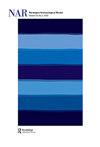英国中石器时代:变化时期的景观与社会
IF 1.1
3区 历史学
0 ARCHAEOLOGY
引用次数: 5
摘要
正如书的封底所写,Chantal Conneller的《英国的中石器时代:变革时代的景观和社会》是90年来第一次对英国中石器时代的真正综合。这有点令人难以置信,但考虑到这份出版物的重要性,这一点并非微不足道。从这个角度来看,《英国中石器时代》的中心前提是提出了一个新的时间框架。当格雷厄姆·克拉克的博士论文于1932年发表时(这是最后一次进行这种合成),放射性碳方法距离成功证明还有17年的时间。说更新来得太迟是一种轻描淡写的说法。当然,对英国中石器时代的综合研究较少(如Palmer 1977, Wymer 1991, Smith 1992),编辑卷(如Conneller和Warren 2006),以及摘要论文和概述(如Tolan-Smith 2008)。此外,不列颠群岛的一些地区也因成为区域性论文和研究的主题而受益匪浅,包括近几十年来,苏格兰的中石器时代(Saville 2004年,Warren 2005年),威尔士(Lillie 2015年)和英格兰东北部(Waddington和Pedersen 2007年)等。从克拉克对这个问题的处理来看,很明显,英国中石器时代从来不是一个单一的实体。改进对区域趋势的解决办法,只会使对整体进行概览的挑战,以及由此带来的所有可变性,成为一项具有内在挑战性的公正主张。很长一段时间以来,这一时期一直被划分为“早期/晚期”,但这总是过于简单化,并且越来越模糊,而不是帮助阐明。因此,这种划分是避免的,而赞成一个新更新和更高度协调的替代方案。这本书首先回顾了英国中石器时代研究的历史,从克拉克和他的前任到该领域更当代的领导者,如已故的卡罗琳·维克汉姆-琼斯。在提出替代方案之前,它探讨了传统框架的问题,包括四个阶段,每个阶段都有一章专门介绍,除了第一阶段,它有两个章节专注于南北最早的中石器时代记录的不同性质。这些阶段如下:(1)公元前9500 - 8200年(章节重点是北方的拓荒者)和公元前9300-8200年(章节重点是南方的“早期中石器时代”),(2)公元前8200 - 7000年是“中石器时代中期”,(3)公元前7000-5000年是“中石器时代晚期”,(4)公元前5000-4000年是“最终中石器时代”。这些划分大体上反映了微岩类型学的时空趋势,并在可能的情况下得到扩展和改进的放射性碳数据库的支持。这种方法具有重要的实用性。尽管通过放射性测年法对年代进行了控制,但中石器时代记录的性质是这样的,许多发现可能在类型学亲和性之外仍然无法确定。构建一个按时间顺序排列的框架,排除了大量(如果不是大多数的话)相关材料的合并,其价值将是有限的。然而,Conneller敏锐地意识到,使用有限的文化参考样本(即石器)来推断更大的文化变化和连续性模式所固有的局限性,他指出,这种新的模式应该有助于“将中石器时代分解为有用的分析部分,其中一些似乎与更广泛的新定居特征有关,因此可能被视为“相关”变化的例子”(第24页)。虽然试图强调生活在公元前9300至3900 cal之间是如何变化的(第23页),但这些划分可能“最好被视为划分和比较我们的数据的启发式”(第35页)。本文章由计算机程序翻译,如有差异,请以英文原文为准。
The Mesolithic in Britain: Landscape and Society in Times of Change
As the back cover of the book notes, Chantal Conneller’s ‘The Mesolithic in Britain: Landscape and Society in Times of Change’ presents the first true synthesis of the British Mesolithic in 90 years. This is somewhat incredulous to think, but not a trivial point when considering the significance of this publication. To put this into perspective, the central premise around which The Mesolithic in Britain is structured is the proposal of a new chronological framework. When Grahame Clark’s PhD thesis was published in 1932 (the last time a synthesis of this kind was undertaken) the radiocarbon method was still 17 years away from being successfully demonstrated. To say that an update is overdue would be beyond an understatement. There have, of course, been less synthetical treatments of the British Mesolithic (e.g. Palmer 1977, Wymer 1991, Smith 1992), edited volumes (e.g. Conneller and Warren 2006), and summary papers and overviews (e.g. Tolan-Smith 2008). In addition, several parts of the British Isles have benefited immensely from being the subject of regionally focussed collections of papers and studies, including from recent decades, the Mesolithic of Scotland (Saville 2004, Warren 2005), Wales (Lillie 2015), and the northeast of England (Waddington and Pedersen 2007) among others. It has been apparent, since Clark’s treatment of the matter, that the British Mesolithic has never been a monolithic entity. An improved resolution of regional trends only makes the challenge of conducting an overview of the whole, and all the variability that that entails, an inherently challenging proposition to do justice. For a long time, the period has been framed through an ‘early/late’ division, but this has always been overly simplistic, and has increasingly come to obfuscate more than it helps to elucidate. Consequently, this division is eschewed in favour of a newly updated and more highly attuned alternative. The book begins by reviewing the history of British Mesolithic research, from Clark and his predecessors through to more contemporary leaders of the field, such as the late Caroline Wickham-Jones. It explores problems with the traditional framework before suggesting an alternative, comprising four phases with a chapter devoted to each, except for the first phase, which is given two chapters focusing on the differing nature of the earliest Mesolithic record from the north and south. These phases are, as follows: (1) 9500– 8200 BC (chapter focus on northern pioneers) and 9300–8200 BC (chapter focus on the ‘Early Mesolithic’ of the south), (2) 8200–7000 BC the ‘Middle Mesolithic’, (3) 7000–5000 BC the ‘Late Mesolithic’ and (4) 5000–4000 BC, the ‘Final Mesolithic’. These divisions are broadly reflective of spatial and temporal trends in microlith typology, underpinned where possible by an expanded and improved radiocarbon database. There is significant utility in this approach. Despite the chronological control brought to bear through radiometric dating, the nature of the Mesolithic record is such that many finds may remain undatable outside of typological affinity. The construction of a chronological framework that precludes the incorporation of a sizable chunk (if not a majority) of the relevant material, would be of limited value. Conneller is keenly aware, however, of the limitations inherent in using a limited sample of cultural referents (i.e. lithics) to infer larger patterns of cultural change and continuity, noting that this new schema should serve to ‘break down the Mesolithic into useful segments for analysis, some of which do seem to be related to a broader suit of new settlement feature, and thus might be seen as examples of “relevant” change’ (p. 24). While seeking to emphasize how life changed between 9300 and 3900 cal BC (p. 23), these divisions can perhaps ‘best be seen as a heuristic for dividing and comparing our data’ (p. 35).
求助全文
通过发布文献求助,成功后即可免费获取论文全文。
去求助
来源期刊

Norwegian Archaeological Review
ARCHAEOLOGY-
CiteScore
2.10
自引率
0.00%
发文量
13
期刊介绍:
Norwegian Archaeological Review published since 1968, aims to be an interface between archaeological research in the Nordic countries and global archaeological trends, a meeting ground for current discussion of theoretical and methodical problems on an international scientific level. The main focus is on the European area, but discussions based upon results from other parts of the world are also welcomed. The comments of specialists, along with the author"s reply, are given as an addendum to selected articles. The Journal is also receptive to uninvited opinions and comments on a wider scope of archaeological themes, e.g. articles in Norwegian Archaeological Review or other journals, monographies, conferences.
 求助内容:
求助内容: 应助结果提醒方式:
应助结果提醒方式:


